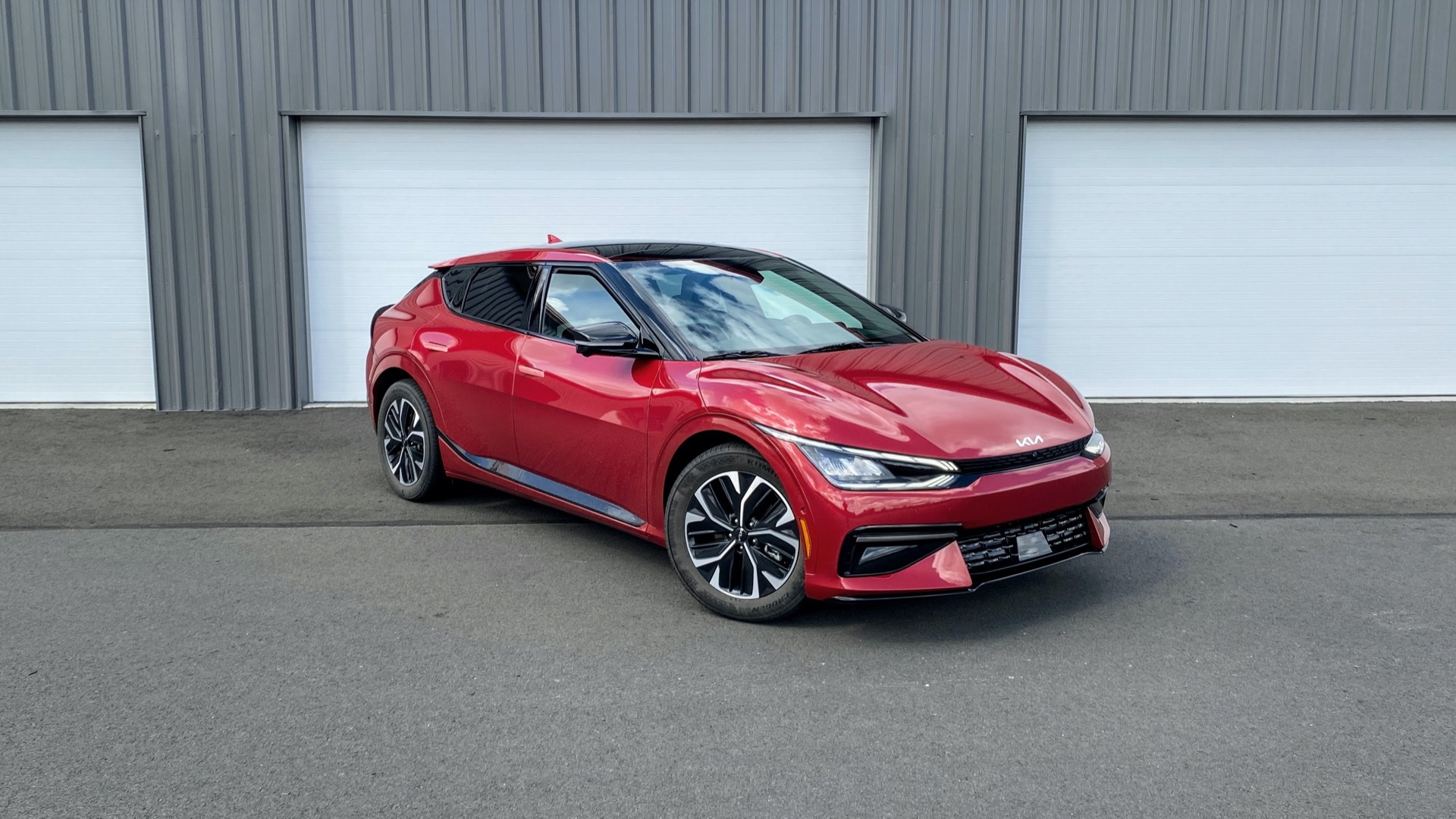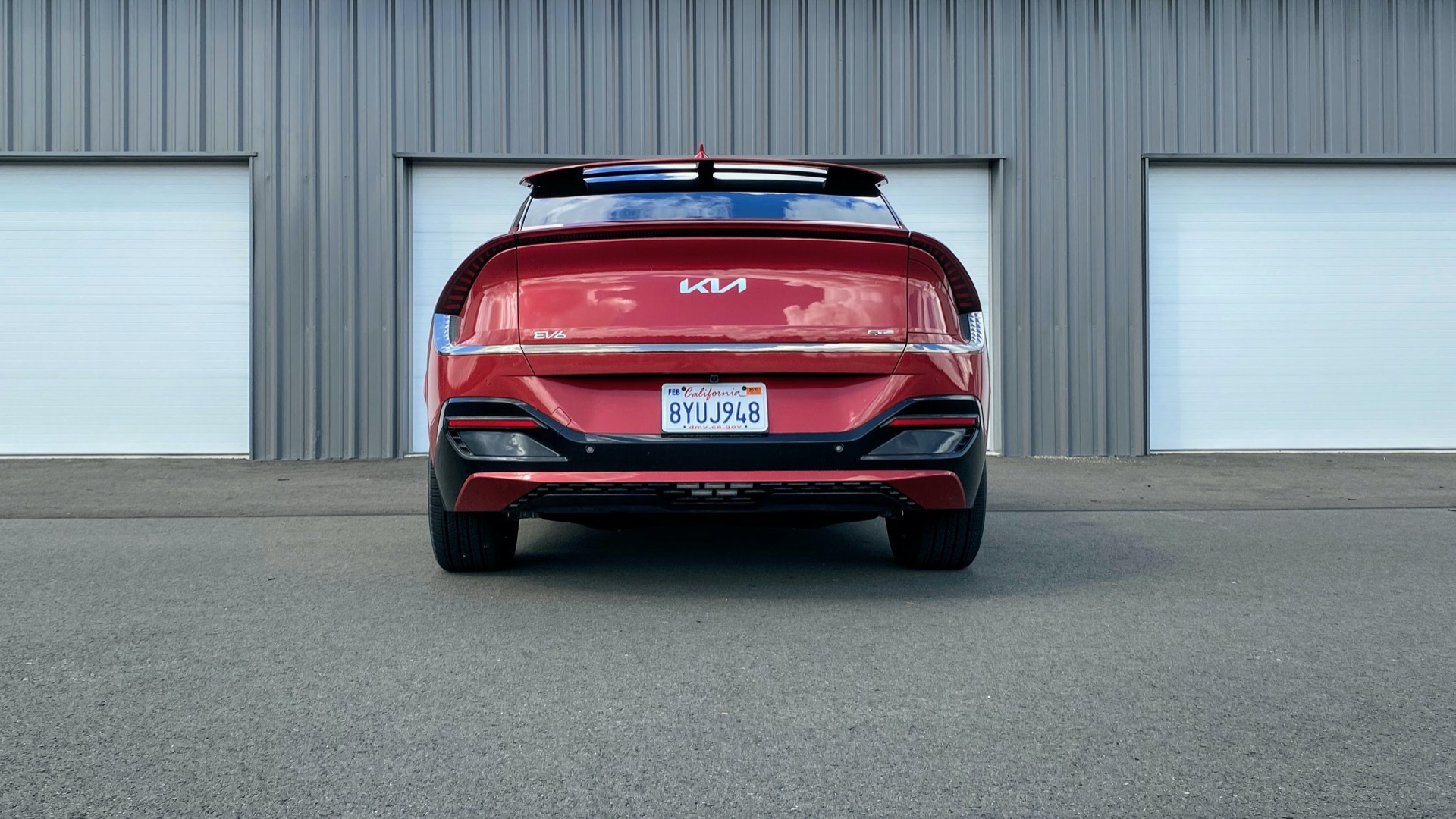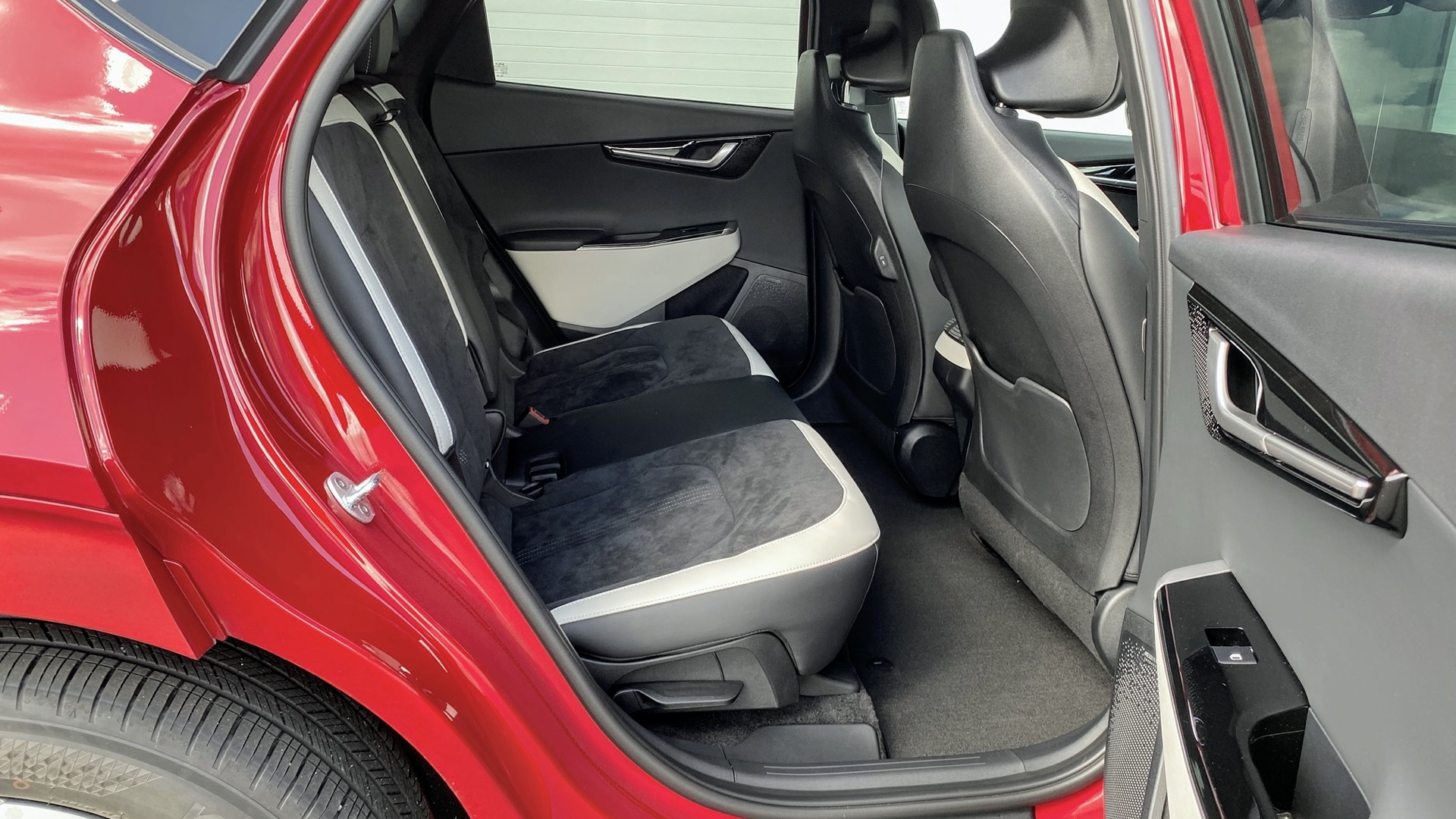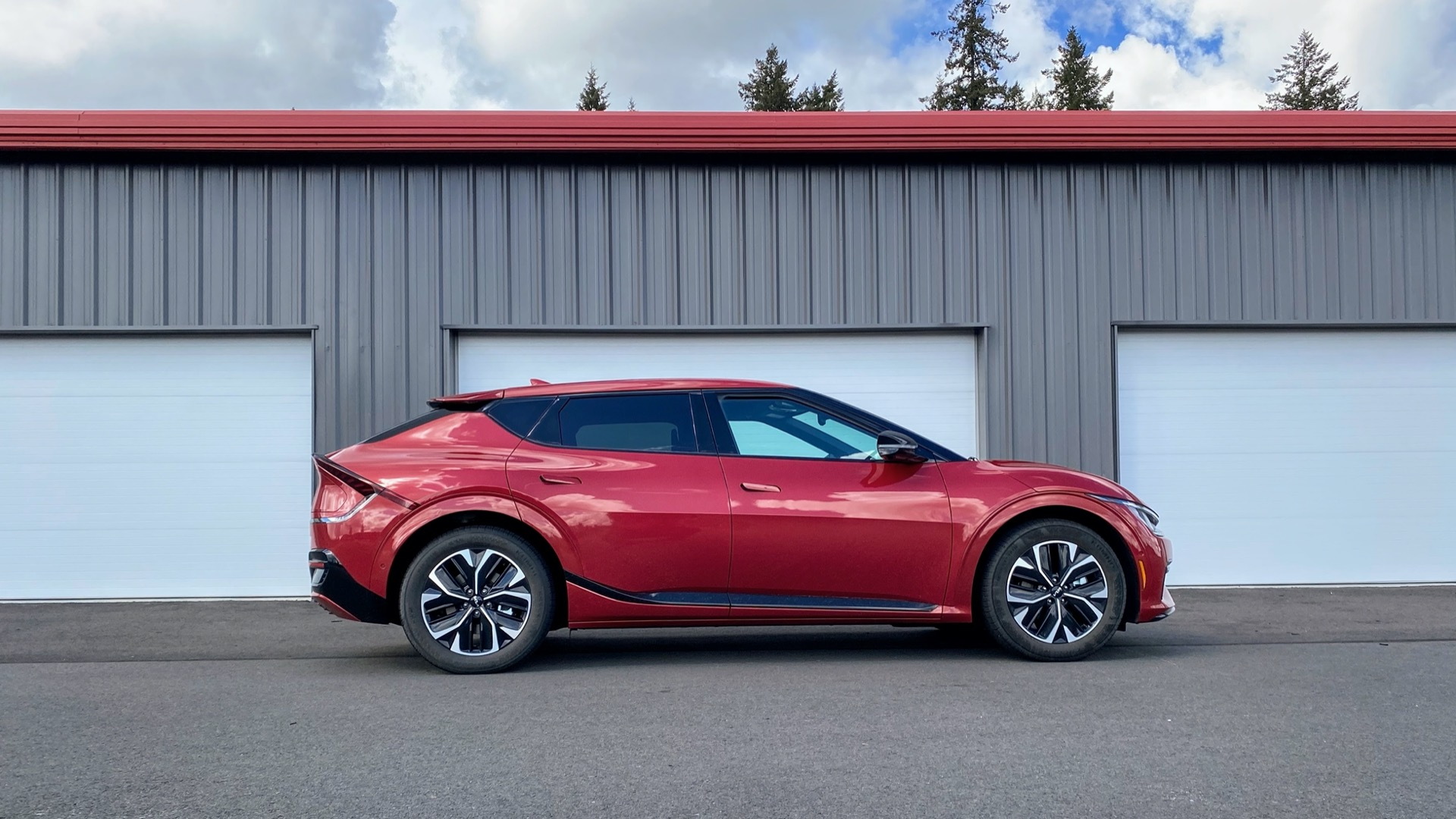The Kia EV6 and Hyundai Ioniq 5 are two of this year’s most wanted EVs. And with the Ioniq 5 essentially unavailable to those in some regions of the country this year, it may seem to some fixated on the Hyundai that they’ll need to settle for second-best.
After spending time recently in both of these models, I can say that while I like the design and fundamental interface choices of the Ioniq 5 a bit better, the EV6 is my preference.
Why? The Kia side of this dynamic duo of EV cousins is tuned better in almost every respect. And that helps me see the whole car in a better, more desirable light.
To that, here are some point-by-point observations on range, charging, and livability—with some details woven in on why I find the EV6 both the better pick of these two right now, and one of the best electric vehicles right now available at a (somewhat) affordable price.
Range: Count on better than 200 miles—even for damp-and-chilly Interstate trips
Over several highway-trip experiences now in these Hyundai and Kia EVs, which have essentially identical propulsion systems, I have confidence that no matter what the conditions, the 77.4-kwh battery pack will return more than 200 miles of range. However, in less than ideal conditions—and probably most real-world driving—you won't see anywhere close to our test car's 310-mile EPA range rating.
As part of my week with a single-motor, rear-wheel-drive EV6—in typical stubborn Pacific Northwest spring weather, chilly with frequent showers—I almost measured up to the 3.4 miles per kwh I observed in the fair weather of a very spirited Napa-region first drive earlier this year.
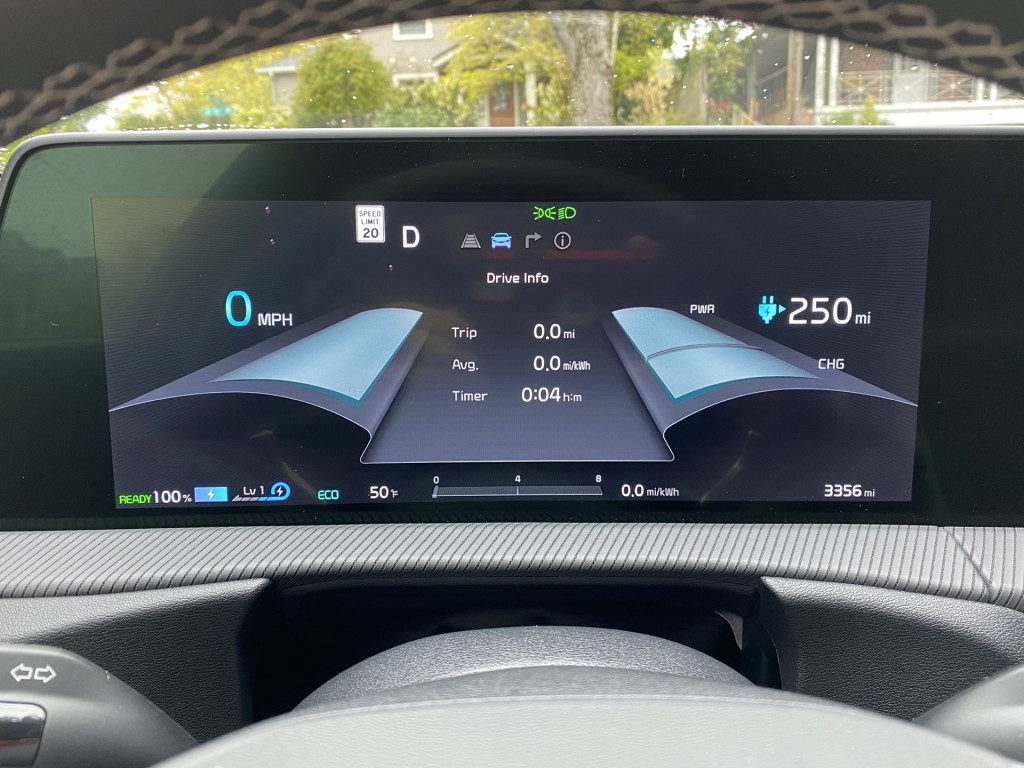
2022 Kia EV6 GT-Line (RWD)
To get a sense of its less-than-ideal highway range, I took the EV6 from Portland to Shelton, Washington, covering 149 miles and averaging 3.1 miles/kwh keeping a rapid pace that broke well past 70 mph for some stretches and averaging nearly 65 mph. It was 50 degrees and damp the whole way, with spotty showers. Then over another 74 miles of errands and back-and-forth to an event, on easygoing 40-55-mph two-laners, I averaged 3.4 mi/kwh. Finally, on a 123-mile Interstate leg back to Portland, I kept to under 70 mph for much of it, using the adaptive cruise control. Over a total of 123 miles, I averaged, surprisingly, the same as my much faster outbound trip—3.1 mi/kwh.
The difference? On the return trip it was pouring, and I had to run the climate control in its defog mode for much of the trip.
Meanwhile, my colleague Brian Wong, in Los Angeles, averaged 4.3 mi/kwh over 174.3 miles of mixed driving, with an average 5.2 mi/kwh over 54.7 LA street miles losing 1,000 feet in elevation, plus 3.7 mi/kwh over 54.6 freeway miles, gaining 1,000 feet.
It underscores that somewhat chillier weather and rain might have a pretty significant impact.
Ironically, my rainy highway-driving profile—and these temperatures—also would have been right on the mark for the energy-saving heat pump that’s included in dual-motor all-wheel-drive models, but not the rear-wheel-drive model I was driving.
Charging: Don’t seek out 350-kw charging
As I emphasized recently in a review update of the 2022 Hyundai Ioniq 5, there’s no need to go seeking out 350-kw DC fast-charging, because the actual time it takes to restore most of a charge is going to be remarkably close in real-world conditions. The Ioniq 5 and EV6 are finicky about accessing their peak charge rate of 235 kw or a bit more, and if you see that—and even more than 200 kw—it’s likely to be very brief.

2022 Hyundai Ioniq 5 and Kia EV6 fast-charging - Lacey, WA
When I connected 350-kw hardware to the EV6 in this moist, cool weather (49 degrees), it took 31 minutes to get me from 7% to 80%—including sub-100-kw rates at first, then a burst to 202 kw, briefly at 35%, with power settling to just above 150 kw for the rest of the charge. A recent charge of the Ioniq 5 in warmer conditions on 150-kw hardware was actually slightly quicker.
Once Kia and Hyundai enable battery preconditioning for fast-charging—as a button, part of route planning or, we hope both—my advice will change. But until then it’s not worth seeking the 350s out.
Real-world driving notes
When I first got to drive the EV6 back in January, I was able to put it through the paces in a way I hadn’t for the Ioniq 5. Kia had us driving on challenging Northern California roads with odd banking and rough surfaces—versus the curvy but smooth and well-banked Southern California route Hyundai had us on with the Ioniq 5. It left me wondering if what I felt as a firmer tune overall for the EV6 was going to be comfortable enough in everyday driving.
After this followup drive I’m convinced that the EV6 is tuned very well for most American road types—better, actually, than the Ioniq 5. Yes, it’s a little firmer and far more predictable when driven hard, without as much of the leaning and wallowing I’ve noticed from the Hyundai, or from the Kia Niro EV. Unexpectedly, the EV6 is more forgiving when you encounter the worst stretches of rough road, and it all comes down to fewer secondary motions. It’s easy to imagine what this tune will be like, reeled in a bit more, in the 576-hp GT model that’s on the way later this year.
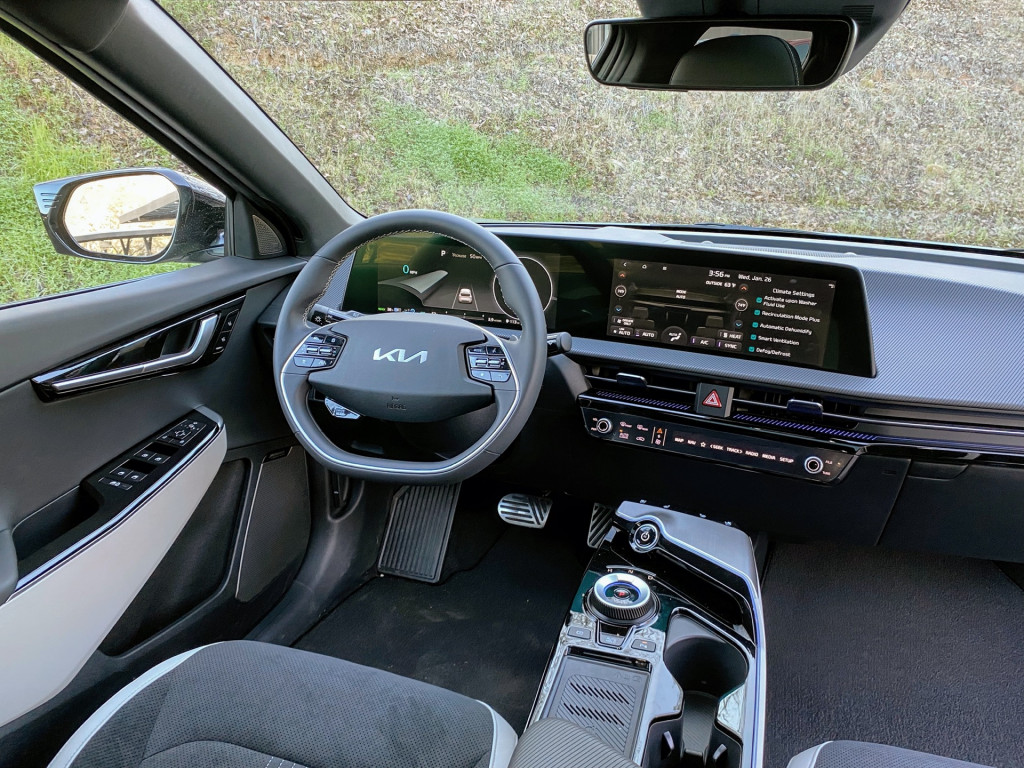
2022 Kia EV6 GT-Line
There’s one fundamental choice in the EV6 that still strikes me as a surprising oversight: The belt-driven electric power steering feels absolutely numb, but it really didn’t bother me in the everyday driving and Interstate slog I did here.
On the other hand, I came away with an even better appreciation for how well this car accelerates, brakes, and gives you plenty of options for regen. And then among modes, Sport sharpens the accelerator response just a bit, but I preferred the more linear feel you get in Normal. In its Eco and Normal modes, the EV6 is just a very easygoing car to drive.
Takeaway: Don’t let the Stinger look scare you away
On the outside, from the supercar snout to the curvy Euro-hatch rear styling, the EV6 looks positively racy. But inside, it’s a much more practical car than those daring first impressions probably suggest.
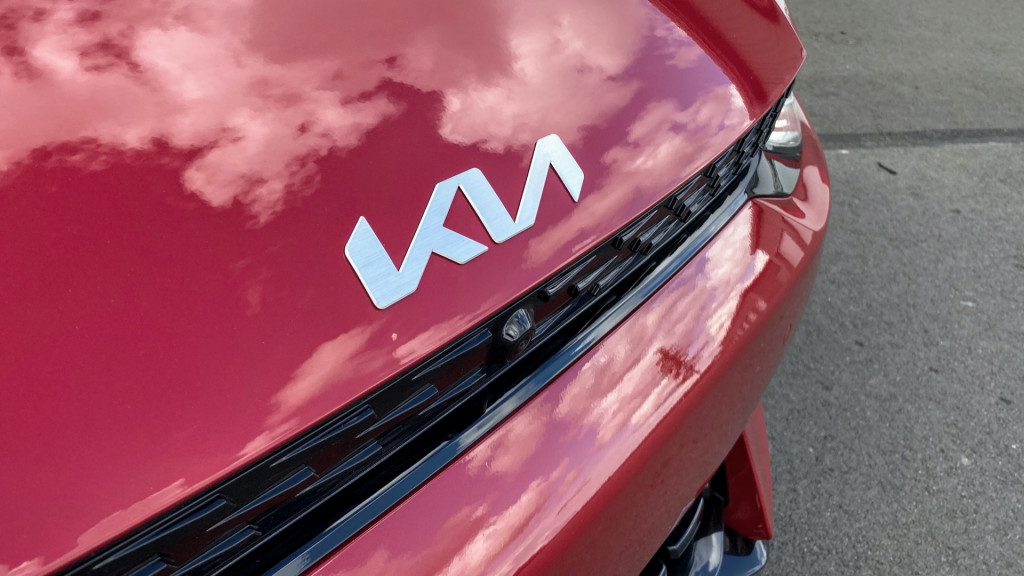
2022 Kia EV6 GT-Line (RWD)
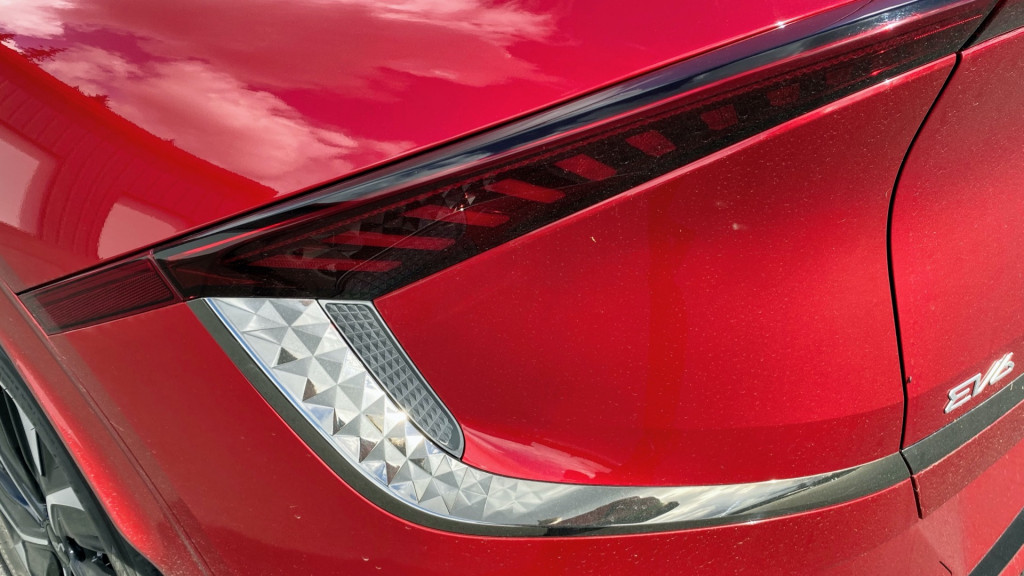
2022 Kia EV6 GT-Line (RWD)

2022 Kia EV6
While road noise might be comparable to the Ioniq 5—and really, most EVs in this class—I’m very impressed by the lack of wind noise in the EV6 at 70 mph and beyond. I wouldn’t be surprised if the smoother, more wraparound rear pays dividends in the wind tunnel.
There’s one exception to my bliss about the EV6. Tall? Don’t get the top-level EV6 GT-Line.
The more time I spend in these two electric hatches, the more mystified I am about the driving position. While actual H-point numbers don’t mean much in reference to the roofline, the gist of it is that with the seat adjusted as low as it will go, taller drivers—like me, at a long-legged 6-foot-6—will feel far too close to the sunroof surround. The workaround? Go with the mid-level Wind, and skip the sunroof. If you’re taller it’s worth it because you’ll feel like you fit in the vehicle. If the seats went down another inch or two the advice here would be different.
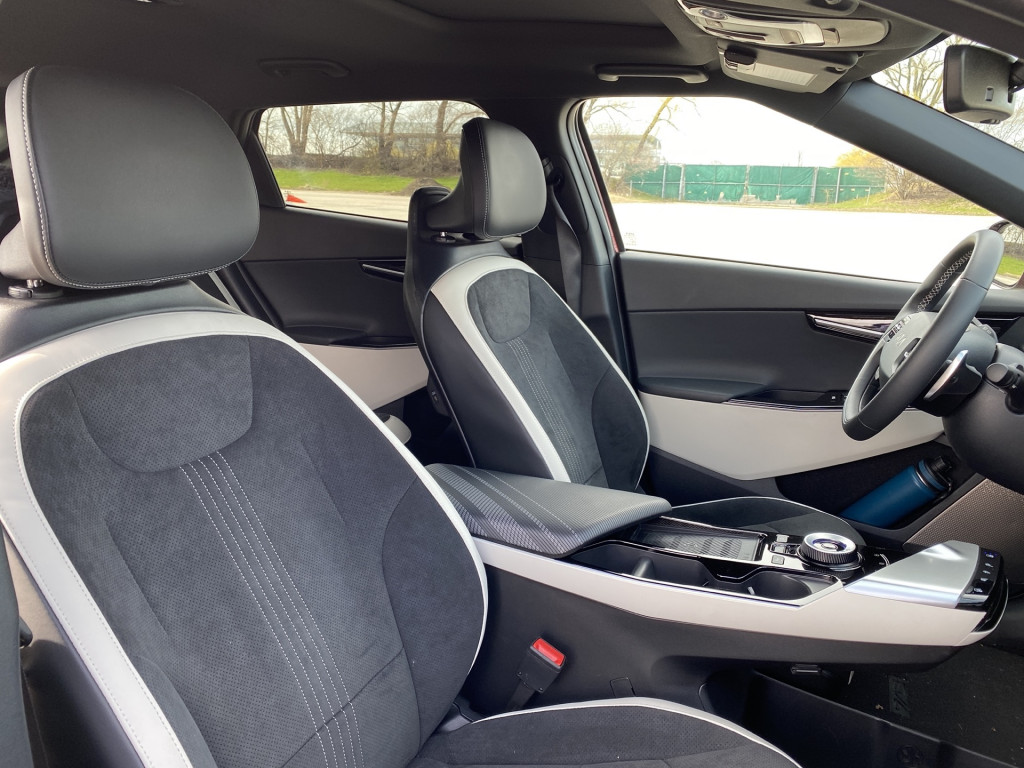
2022 Kia EV6
My test car was the GT-Line, in single-motor rear-wheel-drive form (225 hp and 258 lb-ft of torque), with its price as delivered of $52,710. The GT-Line adds dressed-up trim, alloy pedals, ambient lighting, an excellent augmented-reality head-up display system, remote parking ability, adaptive cruise control with active lane control, and several additional active safety items including an advanced fusion-sensor “plus” version of forward collision-avoidance assistance, a blind-spot camera. This car also had a $295 suede seat package.
All EV6 models get dual 12.3-inch displays, with gauges in the one directly ahead of the driver and a touchscreen just to the right. The touchscreen is responsive and quick, and its menu system is mostly intuitive, with a nifty row of buttons that can be toggled between climate and navigation hot buttons. Combined with the tall center console, the design isn’t as elegant and cohesive as that of the Ioniq 5, but I felt more at ease with it.
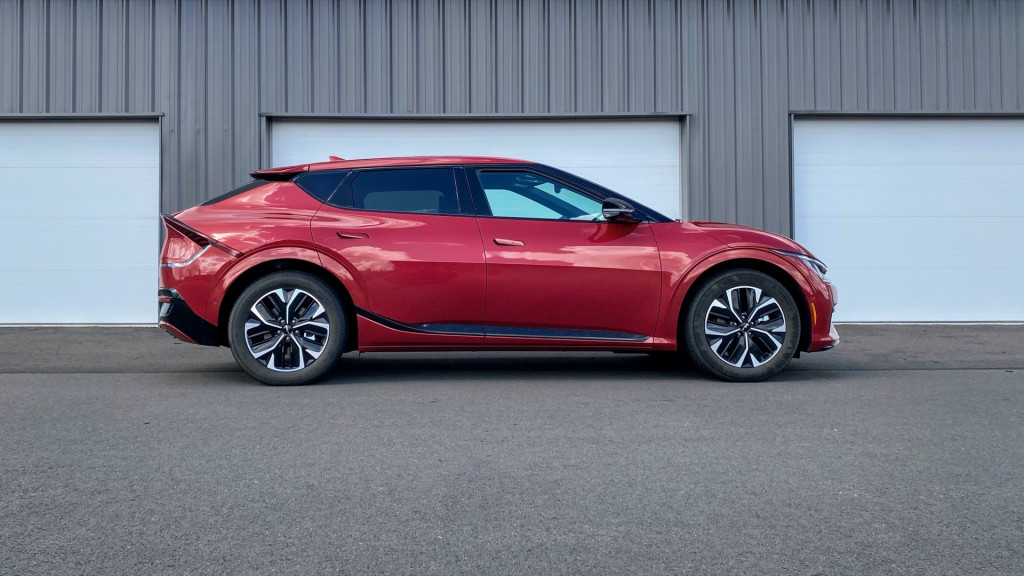
2022 Kia EV6 GT-Line (RWD)
And after spending a week with the EV6, that’s really what makes this car so brilliant. While it might give the first impressions of something racy and finicky, it’s not at all that. It’s an easy car to drive, live with, and interface with—one that happens to be very efficient, look great, and add up to a pretty great value if you can claim the federal EV tax credit.
Will the base model be the best?
My decision is far from final. The Ioniq 5 will keep singing its siren song of ‘80s throwback design and what I feel is one of the most cohesive design statements yet this century. Both of these models are likely to drive quite differently in their rear-wheel, base-battery forms—where I think some of what I appreciate least about the Ioniq 5 might not be issues—and I look forward to breaking that down.

